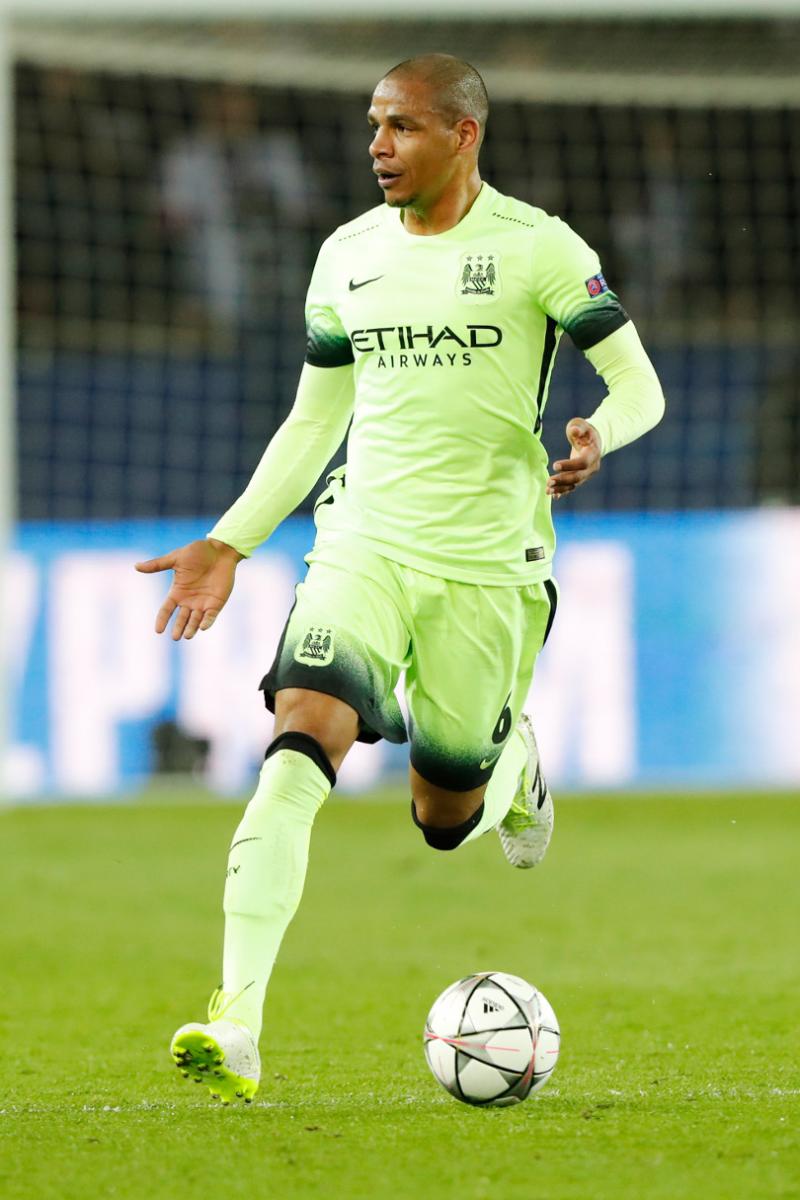
In a game where Joe Hart saved a Zlatan Ibrahimovic penalty, David Luiz was booked within the first 30 seconds and five yellows followed during the 90 minutes, it’s hard to imagine that the most influential part of the game was in fact how Manchester City’s midfielders defended.
And yet, this was very much the case.
According to Stats Zone, PSG had twice as much possession as City. So it would be logical to see this as a game where the French side dictated the flow of the game.
The vast majority of the match’s pivotal moments came about as a result of how City’s midfielders defended
However, the vast majority of the match’s pivotal moments came about as a result of how City’s midfielders defended. Whether there was a quality opportunity for either side, most chances had City’s midfielder’s defensive efforts – for better or worse, at their core.
Less is more
Before examining how exactly this played out, there is a deeper pattern that Manchester City preserved through their performance in this Champions League bout that has to be discussed.
Dating back to December, Manuel Pellegrini’s side have played in 10 matches where their opposition is either currently one of the other top five Premier League teams (Leicester, Tottenham, Arsenal, Manchester United) or competing in the Champions League (Dynamo Kiev, PSG).
The best features, fun and footballing quizzes, straight to your inbox every week.

In the six matches that City had at least half of the possession (averaging about 58%), they lost four times with a goal difference of -5. But in the four matches where City controlled under half of the possession (averaging 41%), Pellegrini’s side lost only once and had a goal difference of just -1.
This is a perplexing realisation as Manchester City’s midfield, in particular the central midfielders, have been criticised for being too lax defensively during the course of this season.
The reality, though, is that in big games when the team has had to defend more than their opponent, they have achieved better results. In particular, as played out in Paris when the game was dictated by the defensive diligence of Manchester City’s midfielders (Fernando’s first-half brain fart aside), the English side can hold their own against top-quality opponents.

Graft leads to craft
So how does this make any sense? To better understand how City consistently do better when they defend more, consider a couple of moments where the midfield line of Jesus Navas, David Silva, Fernando and Fernandinho created a dynamic that forced PSG to hold the ball on City’s terms.
The GIF below shows one of many instances that Pellegrini’s side had four players between the ball and their backline, inherently making it difficult for PSG to them break down. But moreover, the four midfielders were compact and balanced.
From this shape, City were able to work collectively to find a way nick the ball off Ibrahimovic’s foot.

This defensive effort in fact led to a dangerous counter-attack that culminated in Navas playing a good ball to Silva for a header on goal.
In the next example, although PSG gave the ball away carelessly, that shouldn’t take anything away from the four City midfielders’ alert defending. They were again disciplined in their defensive shape and the central midfielders, Fernando and Fernandinho, were particularly sharp in recovering possession of the ball.
This sequence actually led to City’s first goal of the match.

Even at times when the former Premier League champions weren’t as organised as the previous two examples, the midfielders showed excellent desire to win the ball back and challenge PSG’s players.
Consider the scene below. First, Fernando made a great tackle against the crafty Angel Di Maria. Silva followed up with another solid win in a 1-vs-1 battle, giving City an opportunity to move forward with the ball.
This duo of individual efforts was in actuality the prelude to their second goal, and was just another example of them making it difficult for PSG to play the way they may have wanted to.

Conversely, in this last sequence, what started off as an organised defensive midfield line quickly dissolved into chaos. As City’s defensive structure came apart at the seams, PSG played a fine pass that forced the four City midfielders to all run back toward their own goal. This development led to a PSG corner, where they would then net their second goal of the match.

In the clip above, it’s again confirmed that the momentum in this game swayed one way or another based on how well City’s midfield was able to establish themselves defensively at any given time.
Regardless of which team benefited, each of these instances – and many more – all stemmed from the same cause. City put together a better game when they allow teams like PSG to have more of the the ball, but do so in a way where the situations their opponents have possession can be controlled.
Pep’s turn
So where does this leave Manchester City in the immediate and distant future?
Short-term, they have a much better chance than most people are giving them at knocking out PSG in the next leg and moving on in the Champions League.
But perhaps even more interesting is that this is maybe a glimpse into what they will look like next season.
With the likely departure of Yaya Toure, who missed the PSG first leg through injury, and arrival of Pep Guardiola – an expert in counter-attacking football from managing in Germany, where that style of football is particularly prevalent – perhaps this is just the fluid style of play where the line between attack and defence begins to blur and could lead City towards a brighter future.

